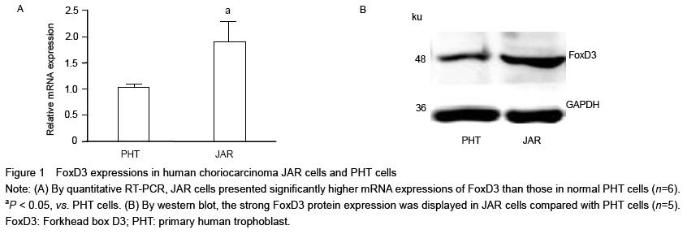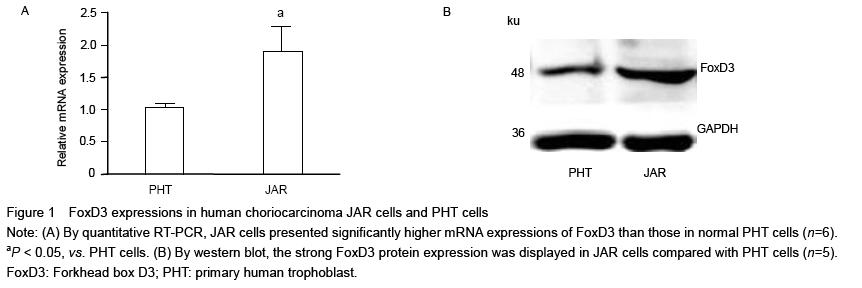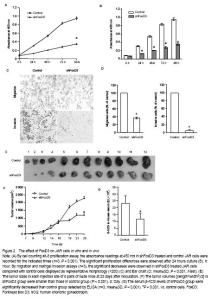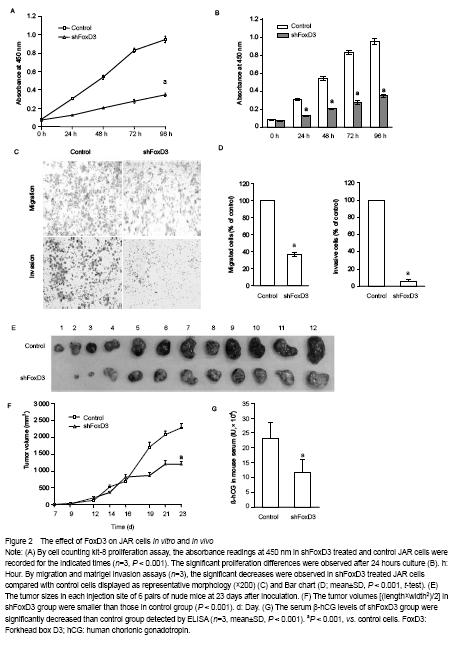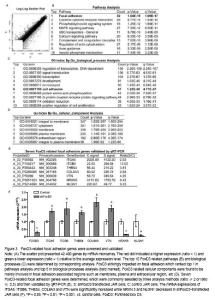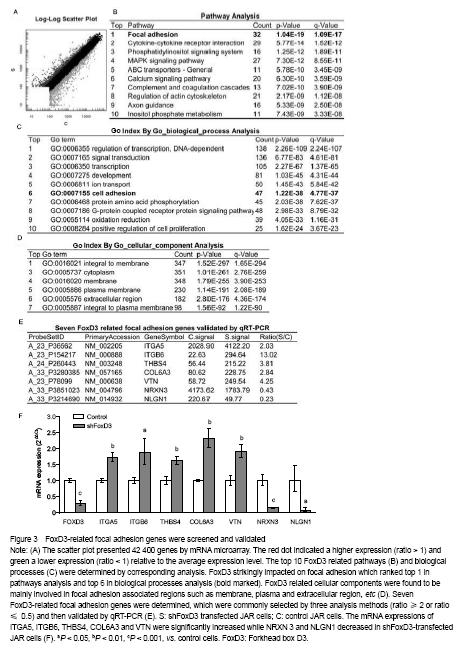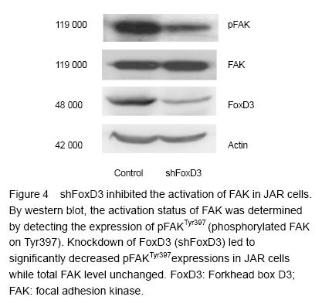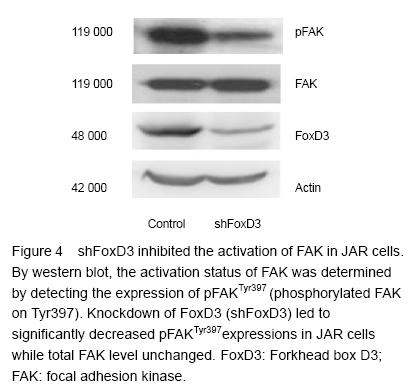| [1] Huang CY, Chen CA, Hsieh CY, et al. Intracerebral hemorrhage as initial presentation of gestational choriocarcinoma: a case report and literature review. Int J Gynecol Cancer. 2007;17(5):1166-1171. [2] Hensley JG, Shviraga BA. Metastastic choriocarcinoma in a term pregnancy: a case study. MCN Am J Matern Child Nurs. 2014;39(1):8-15; quiz 16-17. [3] McDonald TW, Ruffolo EH. Modern management of gestational trophoblastic disease. Obstet Gynecol Surv. 1983;38(2):67-83.[4] Altieri A, Franceschi S, Ferlay J, et al. Epidemiology and aetiology of gestational trophoblastic diseases. Lancet Oncol. 2003;4(11):670-678.[5] Soper JT. Gestational trophoblastic disease. Obstet Gynecol. 2006;108(1):176-187.[6] Kohorn EI. Worldwide survey of the results of treating gestational trophoblastic disease. J Reprod Med. 2014; 59(3-4):145-153.[7] Sutton J, Costa R, Klug M, et al. Genesis, a winged helix transcriptional repressor with expression restricted to embryonic stem cells. J Biol Chem. 1996;271(38):23126-23133.[8] Plank JL, Suflita MT, Galindo CL, et al. Transcriptional targets of Foxd3 in murine ES cells. Stem Cell Res. 2014;12(1):233-240. [9] Yaklichkin S, Steiner AB, Lu Q, et al. FoxD3 and Grg4 physically interact to repress transcription and induce mesoderm in Xenopus. J Biol Chem. 2007;282(4): 2548-2557. [10] Douglas GC, VandeVoort CA, Kumar P, et al. Trophoblast stem cells: models for investigating trophectoderm differentiation and placental development. Endocr Rev. 2009;30(3):228-240.[11] Pan G, Li J, Zhou Y, et al. A negative feedback loop of transcription factors that controls stem cell pluripotency and self-renewal. FASEB J. 2006;20(10):1730-1732.[12] Tompers DM, Foreman RK, Wang Q, et al. Foxd3 is required in the trophoblast progenitor cell lineage of the mouse embryo. Dev Biol. 2005;285(1):126-137.[13] Liu Y, Labosky PA. Regulation of embryonic stem cell self-renewal and pluripotency by Foxd3. Stem Cells. 2008;26(10):2475-2484. [14] Chu TL, Zhao HM, Li Y, et al. FoxD3 deficiency promotes breast cancer progression by induction of epithelial-mesenchymal transition. Biochem Biophys Res Commun. 2014;446(2):580-584. [15] Liu LL, Lu SX, Li M, et al. FoxD3-regulated microRNA-137 suppresses tumour growth and metastasis in human hepatocellular carcinoma by targeting AKT2. Oncotarget. 2014;5(13):5113-5124.[16] Katiyar P, Aplin AE. FOXD3 regulates migration properties and Rnd3 expression in melanoma cells. Mol Cancer Res. 2011;9(5):545-552. [17] Zhang H, Hou L, Li CM, et al. The chemokine CXCL6 restricts human trophoblast cell migration and invasion by suppressing MMP-2 activity in the first trimester. Hum Reprod. 2013;28(9):2350-2362. [18] Liu Y, Wu J, Wu H, et al. UCH-L1 expression of podocytes in diseased glomeruli and in vitro. J Pathol. 2009;217(5):642-653. [19] Zhang HJ, Siu MK, Wong ES, et al. Oct4 is epigenetically regulated by methylation in normal placenta and gestational trophoblastic disease. Placenta. 2008;29(6):549-554. [20] Holmberg H, Kiersgaard MK, Mikkelsen LF, et al. Impact of blood sampling technique on blood quality and animal welfare in haemophilic mice. Lab Anim. 2011;45(2): 114-120. [21] Schlaepfer DD, Mitra SK, Ilic D. Control of motile and invasive cell phenotypes by focal adhesion kinase. Biochim Biophys Acta. 2004;1692(2-3):77-102.[22] Schaller MD. Cellular functions of FAK kinases: insight into molecular mechanisms and novel functions. J Cell Sci. 2010;123(Pt 7):1007-1013.[23] Perera HK, Caldwell ME, Hayes-Patterson D, et al. Expression and shifting subcellular localization of the transcription factor, Foxd3, in embryonic and adult pancreas. Gene Expr Patterns. 2006;6(8):971-977. [24] Plank JL, Suflita MT, Galindo CL, et al. Transcriptional targets of Foxd3 in murine ES cells. Stem Cell Res. 2014;12(1):233-240.[25] Stewart RA, Arduini BL, Berghmans S, et al. Zebrafish foxd3 is selectively required for neural crest specification, migration and survival. Dev Biol. 2006; 292(1):174-188. [26] Liu LL, Lu SX, Li M, et al. FoxD3-regulated microRNA-137 suppresses tumour growth and metastasis in human hepatocellular carcinoma by targeting AKT2. Oncotarget. 2014;5(13):5113-5124.[27] Schmid CA, Müller A. FoxD3 is a novel, epigenetically regulated tumor suppressor in gastric carcinogenesis. Gastroenterology. 2013;144(1):22-25. [28] Siu MK, Wong ES, Chan HY, et al. Overexpression of NANOG in gestational trophoblastic diseases: effect on apoptosis, cell invasion, and clinical outcome. Am J Pathol. 2008;173(4):1165-1172. [29] Cheung M, Chaboissier MC, Mynett A, et al. The transcriptional control of trunk neural crest induction, survival, and delamination. Dev Cell. 2005;8(2): 179-192.[30] Förster S, Gretschel S, Jöns T, et al. THBS4, a novel stromal molecule of diffuse-type gastric adenocarcinomas, identified by transcriptome-wide expression profiling. Mod Pathol. 2011;24(10): 1390-1403. [31] Goel HL, Li J, Kogan S, et al. Integrins in prostate cancer progression. Endocr Relat Cancer. 2008;15(3): 657-664. [32] Greco SA, Chia J, Inglis KJ, et al. Thrombospondin-4 is a putative tumour-suppressor gene in colorectal cancer that exhibits age-related methylation. BMC Cancer. 2010;10:494. [33] Xiong G, Deng L, Zhu J, et al. Prolyl-4-hydroxylase α subunit 2 promotes breast cancer progression and metastasis by regulating collagen deposition. BMC Cancer. 2014;14:1. [34] Pirazzoli V, Ferraris GM, Sidenius N. Direct evidence of the importance of vitronectin and its interaction with the urokinase receptor in tumor growth. Blood. 2013; 121(12): 2316-2323. [35] Goel HL, Li J, Kogan S, et al. Integrins in prostate cancer progression. Endocr Relat Cancer. 2008;15(3): 657-664. [36] Wang Y, Shenouda S, Baranwal S, et al. Integrin subunits alpha5 and alpha6 regulate cell cycle by modulating the chk1 and Rb/E2F pathways to affect breast cancer metastasis. Mol Cancer. 2011;10:84. [37] Bot N, Schweizer C, Ben Halima S, et al. Processing of the synaptic cell adhesion molecule neurexin-3beta by Alzheimer disease alpha- and gamma-secretases. J Biol Chem. 2011;286(4):2762-2773. [38] Golubovskaya VM. Targeting focal adhesion kinase in cancer-part I. Anticancer Agents Med Chem. 2010; 10(10):713.[39] Mitra SK, Hanson DA, Schlaepfer DD. Focal adhesion kinase: in command and control of cell motility. Nat Rev Mol Cell Biol. 2005;6(1):56-68.[40] Ili? D, Genbacev O, Jin F, et al. Plasma membrane-associated pY397FAK is a marker of cytotrophoblast invasion in vivo and in vitro. Am J Pathol. 2001;159(1):93-108. |
